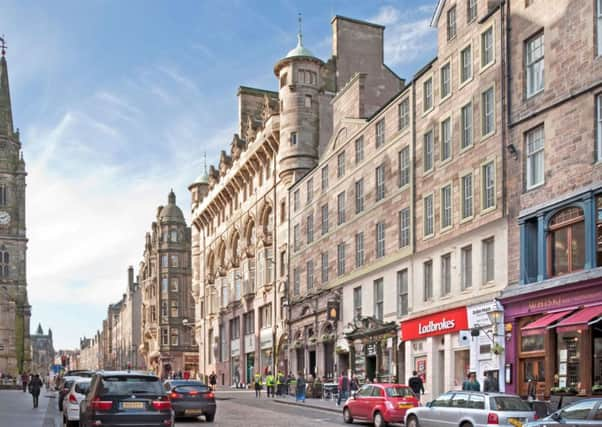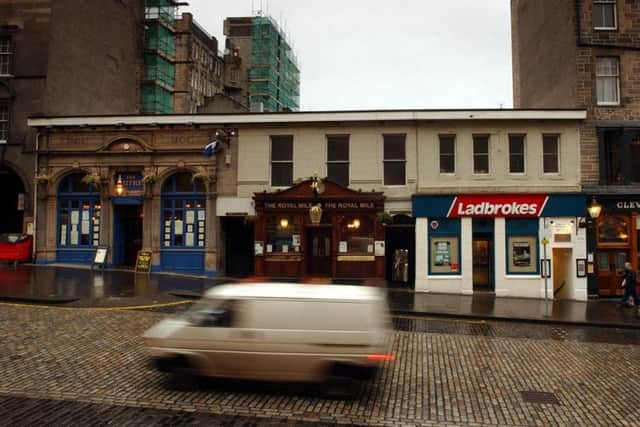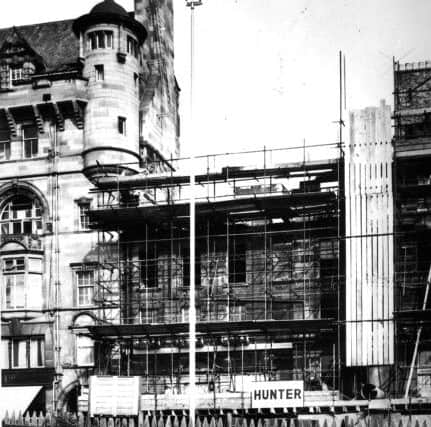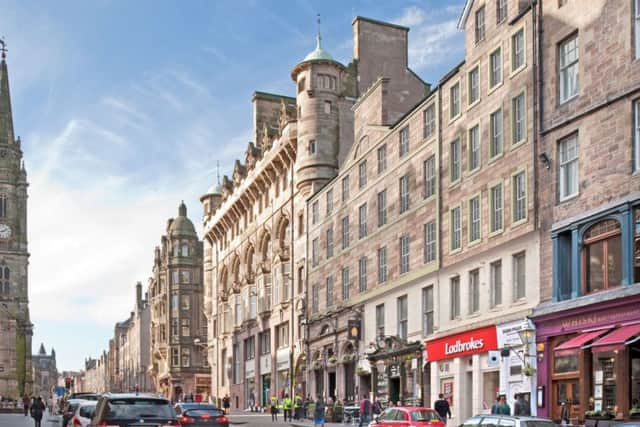Flats fill '˜gap site in the sky' on Edinburgh's Royal Mile


But instead of building on a gap site, the luxury flats and penthouses taking shape on the Royal Mile in Edinburgh are being constructed in the “air space” on a flat roof above a B-listed pub a stone’s throw from John Knox’s house.
The flat roof has been an eyesore in the Unesco World Heritage Site for over five decades following a fire in 1966 which led to flats above it being demolished.
Advertisement
Hide AdAdvertisement
Hide AdBut 123 High Street, due to be completed by late summer, has been described as the “most challenging undertaking, logistically and legally”, by those involved.


One of the initial tasks was a worldwide search, as far away as Australia and the US, to trace the former owners, or descendants of those who had owned the flats, who still had legal ownership of their portion of the “air space” above the roof, and buy it from them.
Meanwhile, David McGinigal, a director of Livingston-based Colorado Construction, faced building “foundations” above the Mitre Bar, Ladbrokes, the Royal Mile Tavern and the Dubh Prais restaurant, amid customers coming and going, crowds of tourists, festivals, and access restrictions which meant he had to resort to centuries-old building methods.
The site has an illustrious history and originally featured a prestigious townhouse tenement owned by John Spottiswood, the Bishop of St Andrews who went to become Archbishop of Glasgow, Archbishop of St Andrews and Church Moderator before being forced to flee Edinburgh in 1637 after riots against his support for imposing the King’s Book of Common Prayer in Scotland. That tenement was destroyed by a fire in 1814.
Advertisement
Hide AdAdvertisement
Hide AdMcGinigal said that due to the restrictions in the street his team had to resort to some building methods which would have been used when many of the original tenements were being built.


“This is a very unusual project and the last remaining gap site in the Royal Mile,” he said. “We were working with the unknown – you don’t know what you’re going to find with traditional Edinburgh buildings.
“We had numerous challenges including the existing building structure, constructing a concrete transfer deck which is acts as the ‘foundations’ above the properties and creating a temporary roof to protect the properties below – including the Mitre Bar’s listed ceiling.
“But with the restrictions on the Royal Mile meaning there was limited opportunity to get deliveries, we found it was best to get materials delivered between 6am-7am and use a small hoist.”
Advertisement
Hide AdAdvertisement
Hide AdMcGinigal added: “We decided to tackle this by going back to old-fashioned ‘stick built’ construction, meaning wood was delivered in certain lengths and floor boards and panels were manufactured and erected on site.”


Tim Allan, managing director of Unicorn Property Group in Dundee, who commissioned the flats selling for £300,000 to £600,000, said: “This has been the hardest development job I’ve ever done and one of the most complex. There was a lot of prolonged legal work including finding out who owned Bishop’s Close as access for us was through it. We had to go back to Sasine Law for 1642 to get the answer that it belonged to Edinburgh Council who sold it to us.”
The architects were JM Architects in Edinburgh.
Malcolm Fraser, a fellow of the Royal Incorporation of Architects in Scotland, said: “The challenge of such a mid-air rebuild, retaining the lovely, historic Mitre Bar underneath, is considerable, and credit to the developer and contractor for bringing new thinking and construction techniques to the challenge.”